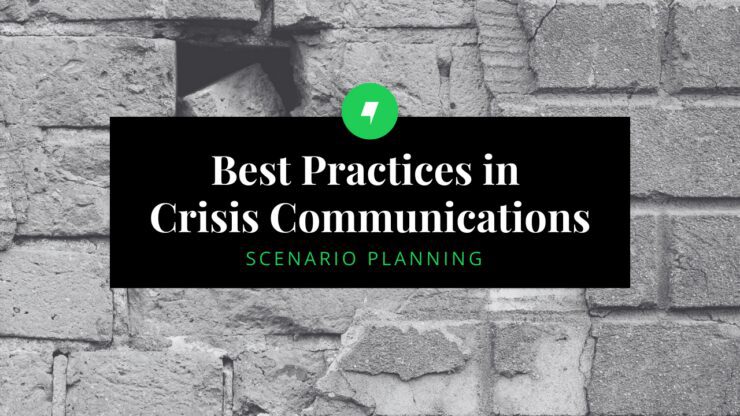All businesses are going to experience a crisis sooner or later. Whether it’s a small issue that needs to be addressed internally or a public situation that has the potential to cause significant reputational damage, the key to successfully navigating any bumps in the road is being prepared.
One of the first steps in crisis communications planning is identifying and brainstorming problems, pain points, or threats that could potentially impact your organization. Essentially, as a business leader, what keeps you up at night? Identifying hypothetical issues in advance can help eliminate the guesswork and reduce missteps in the future when responding to a situation.
Below, we explore the two common crisis scenario categories, what those scenarios could look like for your organization, and next steps to be prepared.
Scenario 1: Corporate & Personnel
The first scenario, and one of the most common issues for businesses, is corporate or personnel-related crises. A few examples include:
- Employee misconduct
- Cybersecurity breaches and hacks
- Fraud, embezzlement, or insider trading
- Employee lawsuit against the organization
- Employee social media backlash
- Allegations of corporate wrongdoing
Scenario 2: External
The next type of crisis scenario is anything external or outside of the control of your business. For example:
- Crime-related or hate-based incident
- Natural disaster or extreme weather-related event
- Active shooter
- Building fire
- On-site accident or injuries
Next Steps
Now that you’ve identified potential crisis situations, what’s next?
When Maven is working with clients to develop a comprehensive crisis communications protocol, we often follow the situational analysis by creating a checklist, essentially a step-by-step roadmap, to follow in the event of each crisis scenario.
For example, the checklist outlines key actions and next steps. This may include:
- Monitoring: Whether or not the issue is anticipated to be public, we recommend looping in the appropriate communications, marketing, or public relations team members to monitor social media and media. Key word alerts can easily be set up through Google Alerts or your company’s social listing and monitoring platform to track for crisis-related mentions.
- Reiterate Policies: Now is the time to remind employees of company policies around media and social media. This could include guidance on directing press inquiries to the appropriate spokesperson and who is – and is not – authorized to speak on the issue publicly.
- Media Response Plan: Depending on the situation, it is also critical to have a media response plan in place to ensure your organization is controlling the message. This plan often includes identifying the appropriate spokesperson along with communication mechanisms, such as an external statement, press release, or press conference.
Unfortunately, crises are inevitable and outside of your organization’s control. But what can be controlled is your response. Taking steps in advance to identify potential issues and develop a thorough response can make all the difference.
For more on crisis communications from the Maven team, check out “Navigating a Storm: Crisis Communication Strategies” and “The Importance of Message Consistency in a Crisis.”
Posted In Crisis Communications
 Emily White
Emily White 